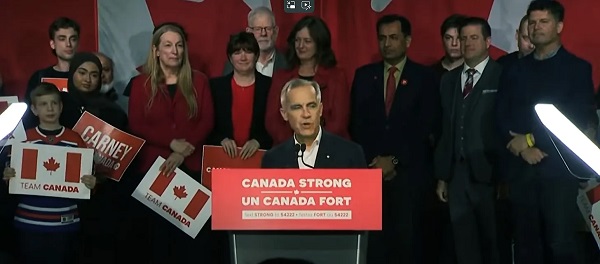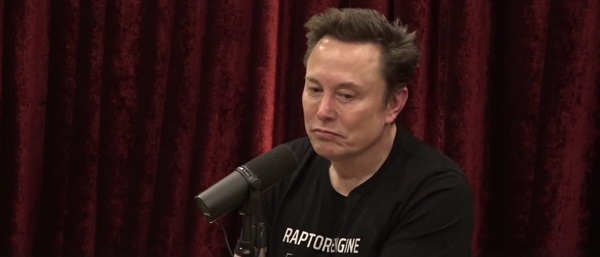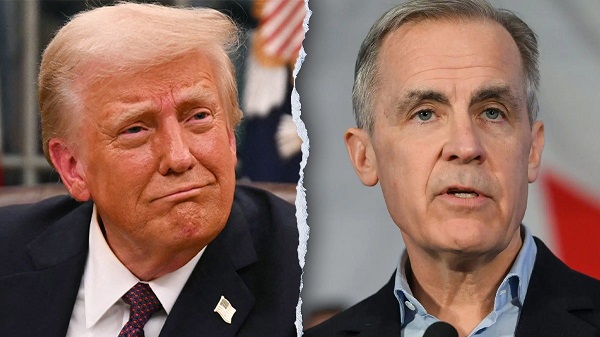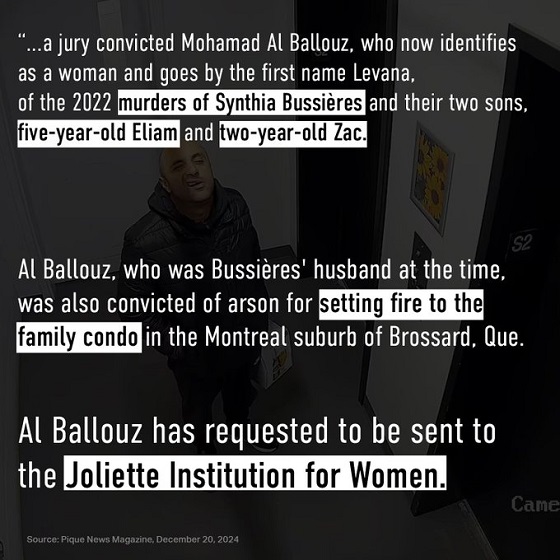illegal immigration
Finally, Trump Clamps Cash Firehose to Mass Migration Nonprofits

by as published February 1, 2025 by The New York Post

For four years, I’ve reported about how a large, organized constellation of United Nations agencies partnered with hundreds of private nonprofit groups to direct billions of mostly US-taxpayer dollars into supporting historic illegal southern border crossing levels during President Joe Biden’s term in office.
Even for the new Trump administration, this conglomerate of 15 UN agencies and 230 NGOs was proposing to spend yet another $1.4 billion on the migration trail in 2025, $1.2 billion more for 2026. That’s in addition to the more than $6 billion from 2020-2024 during the greatest mass migration event in American history. Separately, hundreds of millions more went through NGOs to migrants arriving on the US side for their soft landing resettlements.
But now it looks like little to none of that funding will come from U.S. taxpayers going forward. New Department of Homeland Security Secretary Christi Noem on Wednesday issued an “exclusive announcement” to Fox News’ Will Cain that Trump has turned off that firehose.
“We have stopped all grant funding that’s being abused by NGOs to facilitate illegal immigration into this country,” Noem said. “I’ve taken action to stop those funds, to reevaluate them and to make sure that we’re actually using taxpayer dollars in a way that strengthens this country, to keep people safe.
“We’re not spending another dime to help the destruction of this country.”
This highly consequential sea change is guaranteed to finally bring about a badly needed national policy debate about migration. It’s one that Democrats have worked with their UN, NGO, and US media brethren to squelch throughout Biden’s term in office.
SEE BENSMAN DISCUSS ISSUUE ON FOX NEWS’ THE INGRAHAM ANGLE
An executive order may be enroute with details. Those are badly needed because Noem didn’t say if the cash halt covers the 15 UN agencies working on the trails too, doing the same work as the NGOs and passing through to them some of that US cash – most of which originates as grants from the US State Department and the US Agency for International Development.
However expansive it turns out to be, Noem’s new move comes far too long after I became the nation’s first to report – in 2021 – the UN-NGO organization’s distributions of cash debit cards. In Reynosa, Mexico, I’d stumbled upon lines of migrants receiving the cards, which I was told were loaded with $400 every two weeks.
I went on to exclusively report on the conglomerate’s other US-funded activities for years more, but NGO-UN allies in the Democratic Party thwarted several Republican efforts to cut the money off.
The enterprise’s kingpins, I frequently reported, were the United Nations High Commissioner for Refugees (UNHCR) and the UN International Organization for Migration (IOM), both of which receive billions annually from the United States, the majority of their budgets. The UN money cannot go unaddressed if the Trump administration is serious about ending US taxpayer support for the nation’s mass migration crises.
On the ground, I often personally observed this mammoth, powerful UN cartel dish out cash cards, food, camping supplies, and legal advice. I once discovered two Jesuit-run NGOs in southern Mexico offering psychologists who would help economic migrants denied asylum dig up their “repressed memories” of more eligible “government persecution.”
On an August 2024 reporting trip to Colombia and Panama, I observed farmer’s markets of NGO and UN agency storefronts near bus stops, smuggling boats, and staging areas at the Darien Gap passage to Panama. Every worker there knew they were aiding and abetting illegal smuggler activity to help migrants illegally enter Panama. In Colombia, none could possibly operate without the express approval of the Clan del Golfo cartel, a vicious cocaine-smuggling paramilitary that ran the region with an iron fist.
I asked a NGO worker manning the booth of a Judaism-affiliated NGO called Cadena in far northwest Colombia, a staging area for smuggled journeys into the Darien Gap through Panama, what she thought about US criticism concerns that NGOs like hers helped migrants break the laws of many countries by handing out food and gear for the journey.
“As an organization,” the Cadena worker responded. “We’re not here to judge. We’re just here to provide a service.”
Americans can expect much pushback from religious organizations whose NGOs on both sides of the US border are bloated by record-smashing cash flows padding CEO salaries and endowment accounts.
Some 38 of the 230 working with the UN south of the border had a religious affiliation, according to the UN-NGO partnership group’s latest budget plan. The Catholic Church’s NGOs are well represented on both sides of the border, with Caritas groups and Catholic Relief Services working south of it and Catholic Charities north of it.
No doubt the U.S. Conference of Bishops picked a fight with the wrong parishioner recently, Vice President JD Vance, who is proud of his late-in-life conversion to Catholicism, for the administration’s immigration policies.

When an interviewer asked Vance about the conference’s condemnation, he said he was “heartbroken by that statement” but fired all guns.
“I think the US Conference of Catholic Bishops needs to actually look in the mirror a little bit and recognize that when they receive over $100 million to help resettle illegal immigrants, are they worried about humanitarian concerns? Or are they actually worried about their bottom line?” Ouch.
Vance’s estimate was low but his suggestion that a crass profit motivation was behind the conference’s morality stance holds up.
Americans should remember the historic-sized cash flows when next they hear organized religious leaders fight for funding restoration on grounds that blocking it was ungodly. Because law enforcement investigations of illegal abuses and ending future UN funding would reflect a truer example of God’s work.
Daily Caller
DOJ Releases Dossier Of Deported Maryland Man’s Alleged MS-13 Gang Ties


From the Daily Caller News Foundation
By Katelynn Richardson
The Department of Justice (DOJ) released documents Wednesday demonstrating Kilmar Armando Abrego Garcia’s membership in the MS-13 gang.
Abrego Garcia’s police interview, immigration court rulings and Department of Homeland Security (DHS) deportable/inadmissible alien record highlighting his membership in the gang, which he has disputed in court, are included in the release.
In a December 2019 decision, the Board of Immigration Appeals dismissed Abrego Garcia’s challenge to an immigration judge’s factual finding that he is “a verified member of MS-13.”
The board found the immigration judge “appropriately considered allegations of gang affiliation against the respondent in determining that he has not demonstrated that he is not a danger to property or persons.”
Officers found Abrego Garcia loitering in a Home Depot parking lot on March 28, 2019, wearing “a Chicago Bulls hat and a hoodie with rolls of money covering the eyes, ears and mouth of the presidents on the separate denominations,” the initial Prince George’s County Police Department Gang Field Interview Sheet states.
“Wearing the Chicago Bulls hat represents that they are a member in good standing with the MS-13,” the document states. “Officers contacted a past proven and reliable source of information, who advised Kilmar Armando ABREGO-GARCIA is an active member of MS-13 with the Westerns clique. The confidential source further advised that he is the rank of ‘Chequeo’ with the moniker of ‘Chele.’”
The administration became embroiled in a legal dispute after Abrego Garcia, who entered the country illegally in 2011, was deported in March to El Salvador as a result of an error. In court records, they argued Abrego Garcia could not “relitigate the finding that he is a danger to the community.”
A lower court ordered his return, but the Supreme Court required it to clarify the order and directed the administration to “facilitate” Abrego Garcia’s release.
The Department of Justice (DOJ) indicated Wednesday that it would appeal the amended order Judge Paula Xinis issued which directed the government to “take all available steps to facilitate the return of Abrego Garcia to the United States as soon as possible.”
During a Monday meeting with President Donald Trump, El Salvadoran President Nayib Bukele said he would not “smuggle” a terrorist into the U.S.
The Department of Homeland Security (DHS) also released court filings Wednesday showing Abrego Garcia’s wife requested a domestic violence restraining order against him.
illegal immigration
Despite court rulings, the Trump Administration shows no interest in helping Abrego Garcia return to the U.S.


 By Greg Collard
By Greg Collard
With research assistance from James Rushmore
Timeline: The Case of Kilmar Armando Abrego Garcia
With President Trump sitting next to him, El Salvador President Nayib Bukele told reporters in the Oval Office on Monday that no, he is not going to release Kilmar Armando Abrego Garcia from his country’s Terrorism Confinement Center (CECOT), despite a Justice Department lawyer admitting in a court filing that Abrego Garcia’s deportation last month was an “administrative error.”
No matter, Bukele said when asked if would return him to the U.S.:
Bukele: Of course I’m not going to do it. The question is preposterous. How can I smuggle a terrorist into the United States. I don’t have the power to return him to the United States.
Reporter: But you could release him inside El Salvador.
Bukele: Yeah, but I’m not releasing, I mean I’m not very fond of releasing terrorists into our country. We just turned the murder capital of the world into the safest country in the Western hemisphere, and you want us to go back into releasing criminals so we can go back to being the murder capital of the world? That’s not going to happen.
Not that there was any doubt what Bukele would say. Attorney General Pam Bondi set the tone early on in the meeting. She explained what the Supreme Court meant last week when it said a lower court ruling “properly requires the government to ‘facilitate’ Abrego Garcia’s release from custody in El Salvador.”
The Supreme Court ruled, president, that if El Salvador wants to return him … we would facilitate it, meaning provide a plane.
It brings to mind President Clinton’s infamous grand jury testimony when he said: “It depends upon what the meaning of the word ‘is’ is.”
Abrego-Garcia left El Salvador and illegally entered the U.S. in 2011. His status as an illegal immigrant changed after he was arrested in 2019 and the Department of Homeland Security accused him of being a member of the MS-13 gang. Abrego Garcia fought the accusation and applied for asylum. Instead, an immigration judge granted him “withholding of removal” status.
A federal judge wrote in an April 6 opinion that in El Salvador “the Barrio 18 gang had been targeting him and threatening him with death because of his family’s pupusa business.”
The Justice Department argues its hands are tied. It doesn’t matter that the U.S. is paying El Salvador $6 million a year to house U.S. deportees at CECOT.
“The United States does not have control over Abrego Garcia. Or the sovereign nation of El Salvador,” says one court filing.
Below is a timeline of the case since Abrego Garcia was arrested last month, leading up to Monday’s Oval Office meeting with Bukele.
March 12-15, 2025
ICE agents stop Abrego Garcia and tell him that he is no longer under “withholding of removal” status. The Trump administration says he is a member of the MS-13 gang, which the president has designated a foreign terrorist organization.
Abrego Garcia, who denies he is part of MS-13, is sent to an ICE detention facility in La Villa, Texas, and from there he is deported to El Salvador on March 15 along with 260 others, primarily Venezuelan nationals. He is being held in CECOT, a prison that has a capacity of 40,000 inmates.
March 24, 2025
Abrego Garcia and his wife, Jennifer Vasquez Sura, file a lawsuit that notes Abrego Garcia has been in the U.S. legally since 2019 under withholding of removal status, and that the designation was never lifted.
They also accuse the government of sending Abrego Garcia to El Salvador despite “knowing that he would be immediately incarcerated and tortured in that country’s most notorious prison; indeed, Defendants have paid the government of El Salvador millions of dollars to do exactly that. Such conduct shocks the conscience and cries out for immediate judicial relief.”
The lawsuit requests the court order the U.S. government to tell the government of El Salvador to release and deliver Abrego Garcia to the U.S. Embassy in San Salvador.
March 31, 2025
The Justice Department acknowledges in a court filing that “although ICE was aware of his protection from removal to El Salvador, Abrego Garcia was removed to El Salvador because of an administrative error.”
Still, the Justice Department argues the motion should be denied because the court “has no power” over El Salvador. Justice Department attorneys argue:
Under their (plaintiffs) logic, this Court may assume jurisdiction to decide whether the order is legal, but if the order were determined legal, then jurisdiction would disappear again.
The government also says there’s no proof that Abrego Garcia will be tortured or killed in CECOT:
Plaintiffs point to little evidence about conditions in CECOT itself (focusing primarily on its capacity for detainees), instead extrapolating from allegations about conditions in different Salvadoran prisons. While there may be allegations of abuses in other Salvadoran prisons—very few in relation to the large number of detainees—there is no clear showing that Abrego Garcia himself is likely to be tortured or killed in CECOT. More fundamentally, this Court should defer to the government’s determination that Abrego Garcia will not likely be tortured or killed in El Salvador.
April 4, 2025
U.S. District Court Judge Paula Xinis orders the Trump Administration to return Abrego Garcia to the U.S. by 11:59 p.m., April 7. She writes:
Plaintiffs are likely to succeed on the merits because Abrego Garcia was removed to El Salvador In violation of the Immigration and Nationality Act…and without any legal process; his continued presence in El Salvador, for obvious reasons, constitutes irreparable harm; the balance of equities and the public interest weigh in favor of returning him to the United States; and issuance of a preliminary injunction without further delay is necessary to restore him to the status quo and to avoid ongoing irreparable harm resulting from Abrego Garcia’s unlawful removal.
April 5, 2025
The Justice Department appeals the order, calling it “indefensible” that “a federal district judge ordered the United States to force El Salvador to send one of its citizens—a member of MS-13, no less—back to the United States by midnight on Monday. If there was ever a case for an emergency stay pending appeal, this would be it.”
More from the appellate motion:
Foremost, [the order] commands Defendants to do something they have no independent authority to do: Make El Salvador release Abrego Garcia, and send him to America. That is why Plaintiffs did not even ask the district court for an order directing Abrego Garcia’s return. As Plaintiffs themselves acknowledged, a federal court “has no jurisdiction over the Government of El Salvador and cannot force that sovereign nation to release Plaintiff Abrego Garcia from its prison.” That concession is all that is needed to order a stay here. No federal court has the power to command the Executive to engage in a certain act of foreign relations; that is the exclusive prerogative of Article II, immune from superintendence by Article III.
April 6, 2025
Judge Xinis issues a follow-up memorandum opinion to her April 4 order:
Although the legal basis for the mass removal of hundreds of individuals to El Salvador remains disturbingly unclear, Abrego Garcia’s case is categorically different—there were no legal grounds whatsoever for his arrest, detention, or removal. Nor does any evidence suggest that Abrego Garcia is being held in CECOT at the behest of Salvadoran authorities to answer for crimes in that country. Rather, his detention appears wholly lawless.
The judge also writes that in 2019, Homeland Security “relied principally on a singular unsubstantiated allegation that Abrego Garcia was a member of MS-13.”
April 7, 2025
A three-judge panel of Fourth U.S. Circuit Court of Appeals unanimously denies the government’s motion for a stay of Xinis’ order that say Abrego Garcia must be returned to the U.S. by 11:59 p.m. Judge Stephanie Thacker writes:
The United States Government has no legal authority to snatch a person who is lawfully present in the United States off the street and remove him from the country without due process. The Government’s contention otherwise, and its argument that the federal courts are powerless to intervene, are unconscionable.
The Trump Administration appeals to the U.S. Supreme Court, and Chief Justice John Roberts grants an administrative stay to give justices time to consider the case.
Following the stay, Bondi accuses Abrego Garcia of being a “violent gang member”:
We will continue to fight for the safety of Americans and get these people out of our country to make America safe.
April 10, 2025
The Supreme Court rules against the Trump administration but directs Judge Xinis to “clarify” a portion of her ruling. From the Supreme Court’s decision:
The order properly requires the Government to “facilitate” Abrego Garcia’s release from custody in El Salvador and to ensure that his case is handled as it would have been had he not been improperly sent to El Salvador. The intended scope of the term “effectuate” in the District Court’s order is, however, unclear, and may exceed the District Court’s authority. The District Court should clarify its directive, with due regard for the deference owed to the Executive Branch in the conduct of foreign affairs. For its part, the Government should be prepared to share what it can concerning the steps it has taken and the prospect of further steps.
April 11, 2025
If the Supreme Court said, ‘Bring somebody back,’ I would do that. I respect the Supreme Court.
President Trump says that aboard Air Force One a day after the Supreme Court upholds a lower court ruling and says the government should “facilitate” Abrego Garcia’s return to the U.S.
Meanwhile, Judge Xinis issues a new order that directs the government to “take all available steps to facilitate the return” of Abrego Garcia. In a hearing, she also makes clear her frustration with the Justice Department.
“The record, as it stands, is, despite this court’s clear directive, your clients have done nothing to facilitate the return of Mr. Abrego Garcia,” she says.
Xinis also orders the administration to provide daily updates on the status of Abrego Garcia’s return. She also criticizes Justice Department attorneys in her order:
During the hearing, the Court posed straightforward questions, including: Where is Abrego Garcia right now? What steps had Defendants taken to facilitate his return while the Court’s initial order on injunctive relief was in effect…? Defendants’ counsel responded that he could not answer these questions, and at times suggested that Defendants had withheld such information from him. As a result, counsel could not confirm, and thus did not advance any evidence, that Defendants had done anything to facilitate Abrego Garcia’s return. This remained Defendants’ position even after this Court reminded them that the Supreme Court of the United States expressly affirmed this Court’s authority to require the Government “facilitate” Abrego Garcia’s return. From this Court’s perspective, Defendants’ contention that they could not answer these basic questions absent some nonspecific “vetting” that has yet to take place, provides no basis for their lack of compliance.
April 12, 2025
A State Department official reports to the court that Abrego Garcia is “alive and secure” at CECOT. “He is detained pursuant to the sovereign, domestic authority of El Salvador,” the State Department’s Michael Kozak says in a filing.
However, he does not give an update on the status of Abrego Garcia’s return to the U.S.
-

 espionage23 hours ago
espionage23 hours agoEx-NYPD Cop Jailed in Beijing’s Transnational Repatriation Plot, Canada Remains Soft Target
-

 2025 Federal Election2 days ago
2025 Federal Election2 days agoRCMP Whistleblowers Accuse Members of Mark Carney’s Inner Circle of Security Breaches and Surveillance
-

 2025 Federal Election2 days ago
2025 Federal Election2 days agoNeil Young + Carney / Freedom Bros
-
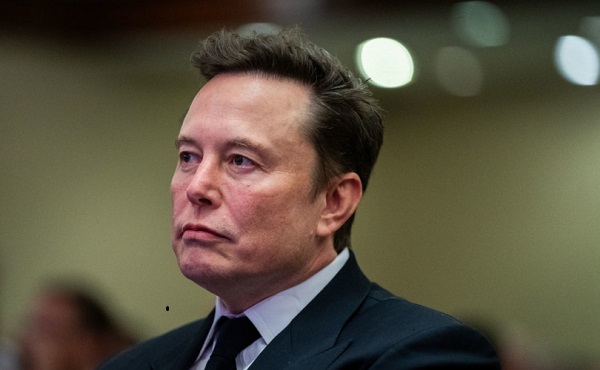
 Business1 day ago
Business1 day agoDOGE Is Ending The ‘Eternal Life’ Of Government
-
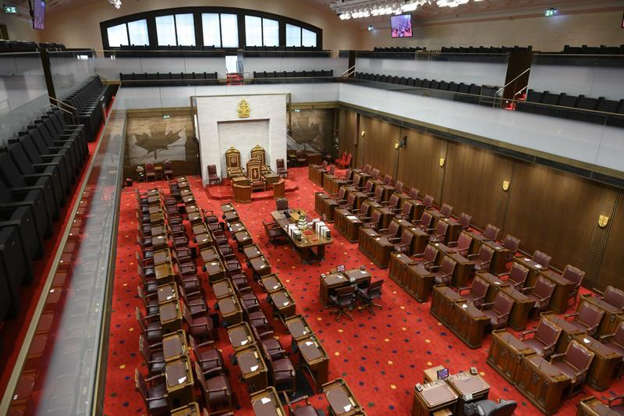
 2025 Federal Election2 days ago
2025 Federal Election2 days agoBureau Exclusive: Chinese Election Interference Network Tied to Senate Breach Investigation
-
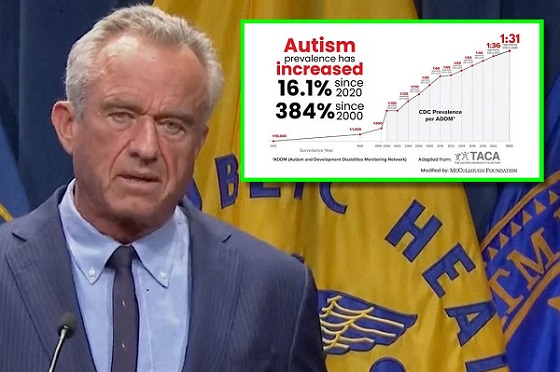
 Autism2 days ago
Autism2 days agoRFK Jr. Exposes a Chilling New Autism Reality
-
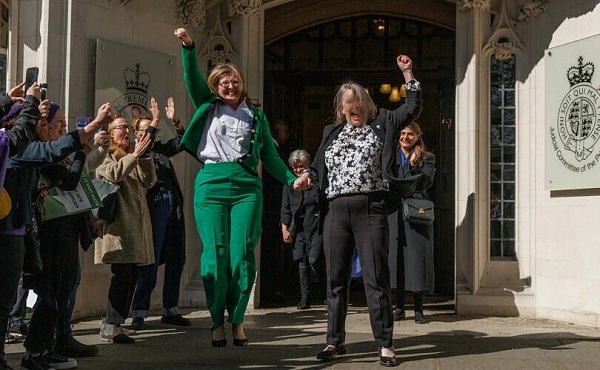
 International2 days ago
International2 days agoUK Supreme Court rules ‘woman’ means biological female
-
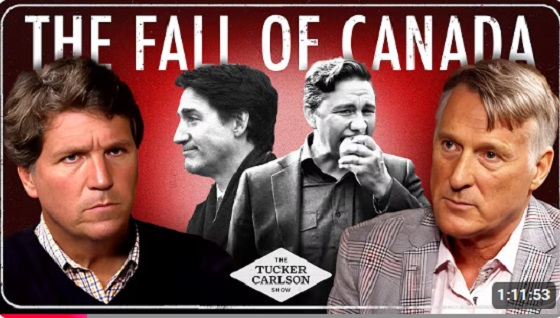
 2025 Federal Election1 day ago
2025 Federal Election1 day agoTucker Carlson Interviews Maxime Bernier: Trump’s Tariffs, Mass Immigration, and the Oncoming Canadian Revolution




